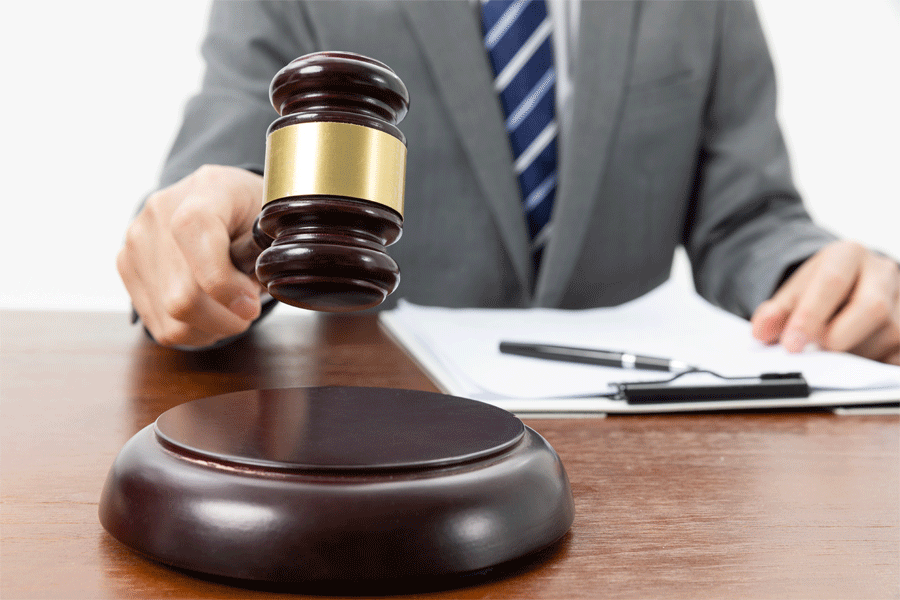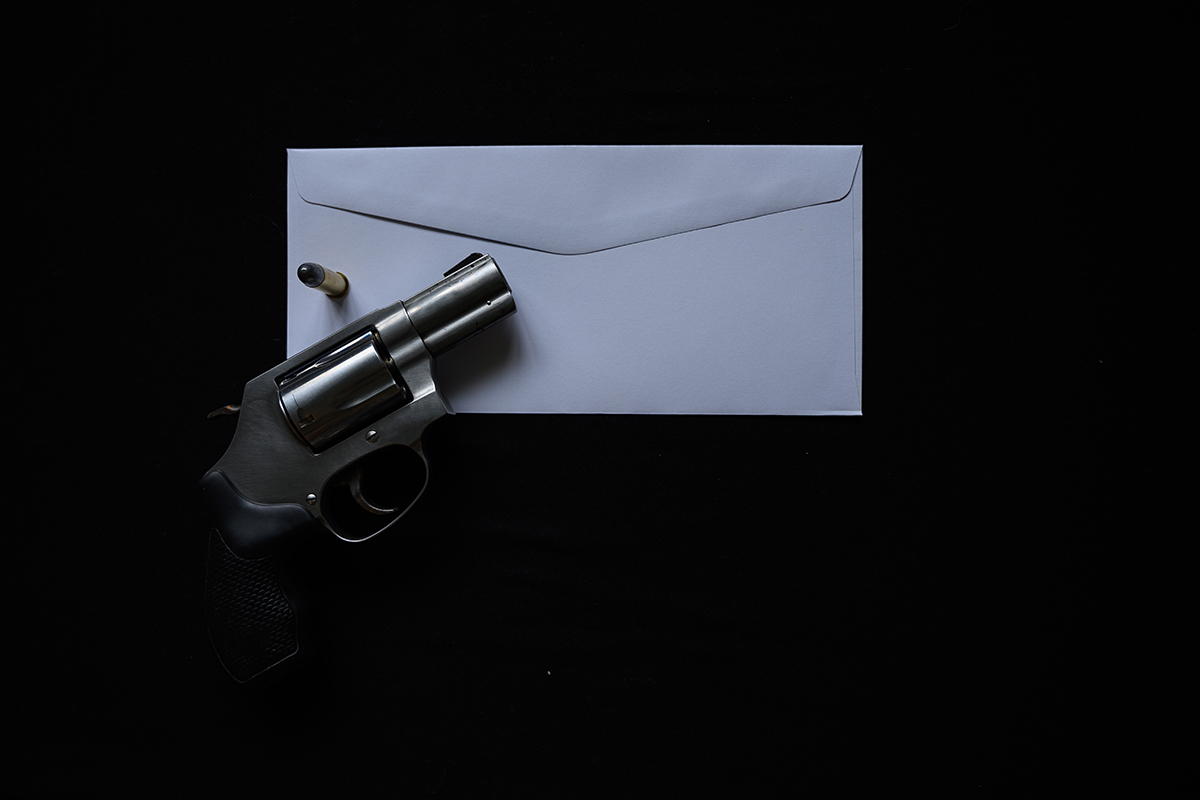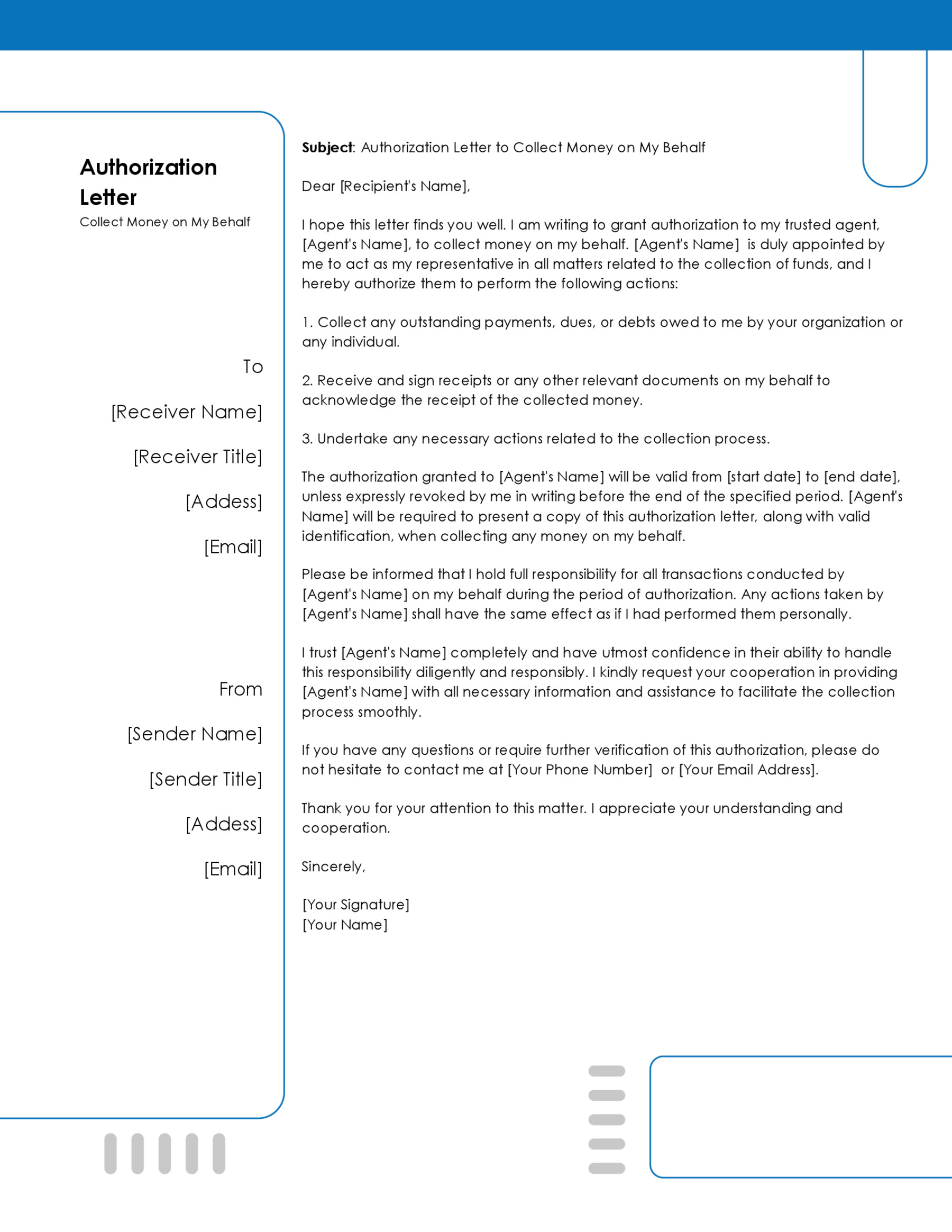This letter of cease and desist is written to request that an entity (organization or individual) stop (cease) a specific action and refrain (desist) from doing it again in the future and that legal action may be sought against them if they fail to do so.
This letter usually takes one of two forms; an injunction issued by a court or a government administrative agency to stop illegal or suspicious activities or a letter written by an attorney or a legal entity as a first formal step to request the infringing party to cease and desist from performing an illegal or suspicious activity.
Reasons to Serve a Cease and Desist Letter
There are very many reasons why this letter may be issued. One of the most common reasons witnessed in recent years is harassment. Harassment can be defined as unwanted, unwelcome, and uninvited behavior that can instill fear or cause one to be annoyed or antagonized.
Other common reasons that may warrant the use of the letters cease and desist include:
- Stalking
- Invasion of privacy
- Property boundary encroachment
- Breach of contract
- Intimidation
- Cyberstalking
- Slander or Libel
- Bullying
Other than the reasons stated above, this letter can also be used for more formal reasons, such as:
Stopping debt collection
Debt collectors usually call defaulters when they fail to service their debt on the agreed date. Although they must inform the defaulter that they defaulted on a loan, some debt collectors usually go way off limits with their obnoxious and frequent calls. The FDCPA-Fair Debt Collection Practices Act controls how a debt collector contacts the defaulter and collects their debts.
The FDCPA protects the defaulter in two main ways; one, it provides a guideline for how an entity may attempt to collect their debts and bans abusive and deceptive conduct; and two, it gives the defaulter the right to force the debt collector to cease frequent calls and emails and provides the defaulter with legal remedies, including the ability to sue the debt collector for financial damages.
Intellectual property violation/copyright infringement
Such a letter can be written to the offending party, informing them that they should cease and desist from infringing your intellectual property. Upon receiving the letter, the infringer may recognize their infringement and cease their actions or send an official correspondence stating why they are not liable for any wrongdoing.
note
When sending this letter, it is recommended that you provide sufficient information to help the defaulting party understand why the letter is being addressed to them and why they should desist from their actions.
Pre-Serving Checklist of Considerations
When writing such a letter, there are several things that you should take into consideration to ensure that the infringing party understands why they are being served the letter and that the letter can be used in court should the infringing party fail to cease and desist from their actions.
These considerations include:
Use direct and actionable language
Using direct and actionable language is very important when drafting a letter of cease and desist. This is because direct and actionable language not only notifies the offender of their breach/violation but also clarifies that should they fail to heed the letter’s demand, legal action may be taken against them.
Support it with statutes and laws
When writing this letter, you must provide relevant case laws or statutes that will help establish your case. This shows the defaulter that you are aware of your rights and are ready to take up any legal battles should they fail to remedy their actions.
note
It is recommended to seek the help of an attorney or a legal entity when dealing with letters that may lead to legal actions such as cease and desist letters. This is because attorneys understand the legal nature of such letters and may offer the best possible advice and/or help you include the best information, depending on your situation.
Keep a mild tone
It is important to note that when sending a letter of cease and desist, especially in cases of copyright violations, the party in breach may not be aware that they have infringed on your intellectual property. Since this letter serves as a first warning to the offender, you must use a mild tone when writing.
It shouldn’t be overly quarrelsome
Do not be aggressive or use offensive words when writing this letter, as this may turn things around, and you may be considered the one harassing or threatening the life of the party in breach. When writing the letter, ensure that the information you provide is enough to capture the offender’s attention and that the information is true, valid, and verifiable.
Free Cease and Desist Letter Template
template
[Your Name]
[Your Address]
[City, State, ZIP Code]
[Email Address]
[Phone Number]
[Date]
[Recipient’s Name]
[Recipient’s Address]
[City, State, ZIP Code]
Re: Cease and Desist Letter
This letter is issued with the utmost seriousness, and [Your Name] expects [Recipient’s Name] to immediately comply with the demands outlined herein.
[Your Name] asserts that [describe in detail the nature of the infringement, including any evidence or examples]. It is [Your Name]’s belief that [legal basis, e.g., trademark infringement, copyright violation, or harassment] has occurred.
[Recipient’s Name] is hereby directed to cease and desist from [demand that the recipient immediately stop the infringing activity].
Furthermore, [Recipient’s Name] is advised to preserve all relevant documents, records, or communication related to the matter, as failure to do so may have legal consequences.
[Your Name] wishes to emphasize that failure to comply with this cease and desist letter may result in legal action. Such legal action may include but is not limited to seeking injunctive relief, damages, and legal fees.
[Recipient’s Name] is given a reasonable timeframe to comply with these demands, specifically [deadline for compliance, e.g., 10 business days from the date of this letter].
For any questions or correspondence related to this matter, [Recipient’s Name] may contact [Your Name] at the provided contact information.
Lastly, [Recipient’s Name] is requested to acknowledge receipt of this letter in writing. It is important to note that this letter does not represent a complete or exhaustive statement of [Your Name]’s rights, claims, or remedies, and it does not constitute a waiver of any rights, claims, or remedies that may be available to [Your Name] at law or in equity. [Your Name] expressly reserves all rights and remedies available.
[Your Name] strongly advises [Recipient’s Name] to seek legal counsel for guidance on this matter, as continued actions that contravene these demands may have serious legal consequences.
In conclusion, [Recipient’s Name] is urged to govern themselves accordingly and to comply with this cease and desist letter to avoid further legal action.
Sincerely,
[Your Name]
[Notary Seal, if applicable]
Sample Cease and Desist Letters
Sample 01
Re: Cease and Desist – Invasion of Privacy
Dear Jane Smith,
I am writing this letter to address a matter of utmost importance regarding a serious invasion of my privacy, which I believe has occurred as a result of your actions or those under your control. This letter serves as an official demand to cease and desist from any further invasion of my privacy and to take corrective actions to rectify the situation.
I have reason to believe that you or individuals associated with you have engaged in activities that have resulted in the invasion of my privacy. Such activities include but are not limited to:
- I have reason to believe that I have been subjected to unauthorized surveillance, including the monitoring of my private communications and activities without my consent.
- It has come to my attention that personal information about me, including my address, phone number, and other private details, has been obtained and disseminated without my consent.
- I believe that my private and confidential information has been unlawfully published or shared with third parties, causing me significant distress and harm.
- I have been subjected to unwarranted harassment and interference in my personal life, which has affected my mental and emotional well-being.
I want to make it explicitly clear that these actions are not only invasive but also illegal and a violation of my rights to privacy under the law. I demand that you immediately cease and desist from any further invasion of my privacy and take the following corrective actions:
- Confirm in writing that you have ceased any invasive activities related to me, including surveillance, data collection, and dissemination of my personal information.
- Destroy any records or information related to me that you have in your possession, custody, or control.
- Provide a written assurance that you will not engage in any future activities that invade my privacy or violate my rights.
- Refrain from any form of harassment, contact, or interference with my personal life.
I am providing you with a reasonable timeframe of 10 business days from the date of this letter to comply with these demands. Failure to do so will leave me with no choice but to pursue legal remedies available to me, which may include seeking injunctive relief, damages, and legal fees.
I urge you to take this matter seriously and seek legal counsel to understand the consequences of your actions. Invasion of privacy is a serious offense under the law, and its repercussions can be severe.
This letter is not intended to be a complete or exhaustive statement of my rights or claims, and I expressly reserve all rights and remedies available to me under the law.
Please acknowledge receipt of this letter in writing and confirm your intentions to comply with these demands.
I hope that this matter can be resolved promptly and amicably to avoid further legal action. However, should it become necessary, I am prepared to take all legal steps to protect my rights and privacy.
Sincerely,
John Doe
[Notary Seal, if applicable]
Sample 02
Re: Property Boundary Encroachment
Dear Mr. Smith,
I hope this letter finds you well. I am writing to address a matter of significant concern regarding a potential property boundary encroachment issue between our respective properties, located at 123 Elm Street and 456 Oak Avenue. It has come to my attention that there may be an encroachment on my property by a structure or landscaping feature on your property.
I value maintaining good neighborly relations, and I believe it is in our mutual interest to resolve this matter amicably and in accordance with legal property boundaries. I would like to bring the following points to your attention:
- I have observed what appears to be a shed on your property that encroaches onto my property at 123 Elm Street. This encroachment is a matter of concern and requires our immediate attention.
- To accurately assess the extent of the encroachment, I have taken the initiative to hire a professional land surveyor to conduct a property boundary survey for both 123 Elm Street and 456 Oak Avenue. The survey results indicate that the shed encroaches approximately 3 feet onto my property.
I kindly request that we work together to resolve this matter promptly and in a manner that ensures our properties are in compliance with the legal property boundaries. This may involve relocating the shed to a position that is within your property boundaries at 456 Oak Avenue.
It is essential to understand that property boundary encroachments can have legal consequences if not addressed appropriately. Cooperatively resolving this matter will help us avoid potential legal disputes and associated costs.
I propose that we engage in a constructive dialogue to reach a mutually acceptable agreement on how to rectify the encroachment issue. This may involve discussions on the relocation or removal of the shed.
I believe that open communication and cooperation between neighbors can lead to a satisfactory resolution of this matter. To initiate this process, I suggest that we meet in person, accompanied by our respective property boundary survey reports, to discuss the encroachment and explore potential solutions.
I am committed to finding a resolution that is fair and respectful of both of our property rights. Please let me know your availability for a meeting at your earliest convenience.
In the spirit of maintaining positive neighborly relations, I look forward to working together to address this property boundary encroachment issue promptly and amicably.
Sincerely,
Ema Thompson
Sample 02
Re: Cease and Desist – Harassment and Bullying
Dear Mr. Johnson,
I am writing this letter to address a matter of utmost importance regarding your continued harassment and bullying directed towards me, Samantha McArthur. Your actions have caused me significant distress and harm, and I insist that you immediately cease and desist from any further harassment or bullying.
I want to make it explicitly clear that your actions are not only hurtful but also unlawful. Harassment and bullying are violations of my rights and are unacceptable behaviors in any setting. Your actions have had a detrimental impact on my well-being, and I demand that they cease immediately.
I have documented multiple instances of your harassment and bullying, including but not limited to incidents on January 5, 20XX, at 3:00 PM, at the park, where you verbally abused and threatened me. These actions have caused me emotional and psychological distress, and I will not tolerate them any longer.
I demand that you take the following actions:
- Cease all forms of harassment, including but not limited to verbal abuse, threats, intimidation, and any other harmful behavior directed towards me.
- Refrain from any further contact with me, whether in person, through written communication, electronic messages, or any other means.
- Issue a written apology to me for your past actions, acknowledging the harm they have caused.
- Make reasonable efforts to make amends for the harm you have caused, which may include reimbursing me for any expenses incurred as a result of your actions.
I am providing you with a reasonable timeframe of 10 business days from the date of this letter to comply with these demands. Failure to do so will leave me with no choice but to pursue legal remedies available to me, which may include seeking restraining orders, injunctions, and legal damages.
Harassment and bullying are not only morally wrong but also illegal. I urge you to reflect on your actions and the consequences they may have for your own well-being. It is in your best interest to cease these behaviors immediately.
This letter is not intended to be a complete or exhaustive statement of my rights or claims, and I expressly reserve all rights and remedies available to me under the law. Your continued harassment and bullying will not be tolerated, and I am prepared to take all necessary legal steps to protect myself.
Please acknowledge receipt of this letter in writing and confirm your intentions to comply with these demands. Ignoring this letter will not make the issue go away, and I am committed to taking further action if necessary.
I hope that you will choose to rectify your behavior and cease any further harassment and bullying. It is my sincere hope that this matter can be resolved without the need for legal intervention.
Sincerely,
Samantha McArthur
How to Serve a Cease and Desist Letter
It is important that, before serving this letter, you gather all vital information and ascertain that the other party is indeed in violation of your rights or intellectual property.
After making sure that they are in violation, here are some of the things that you should do to ensure that they remedy their act:
Draft the letter
The first step is to draft a legally enforceable letter. An effective letter should include a few key provisions. The letter should categorically state the activity you want the other party to cease and why it is illegal for them to continue doing so. The letter should also include a warning that failure to remedy such actions may lead to legal action. Other key components that must also be included in the letter include the date of writing the letter, your name and address, the recipient’s name and address, a description of the “breach/violation/harassment”, and a written demand that they cease such acts in the future.
Deliver the letter
After drafting the letter, the next step is to deliver the letter to the recipient, i.e., the infringing party.
Here are some options you can use to deliver the letter and a few things to consider when delivering the letter:
- Deliver the letter to the infringing party in person
- The second option is to deliver the letter through registered mail and obtain a certificate of posting
- Seek the services of a process server to deliver the letter on your behalf
- Make two copies of the letter and keep one in a safe place for future reference
- Send the other copy to your attorney
In some cases, the infringing party may claim to have unintentionally failed to remedy their act because the letter wasn’t delivered to them appropriately. It is essential that, before sending the letter, you research the best way to serve it to the recipient, as cease and desist letter laws usually vary by jurisdiction.
Enforcing the letter
Once you have sent the letter and ascertained that the recipient has received it, the next step is to wait for a response from the recipient.
If they fail to remedy their act or acknowledge the issue, then you may decide to do the following:
Commence legal proceedings
You may decide to sue them or file a civil action claiming infringement and request the court issue an injunction against the infringing party. An injunction is simply a court order directing the infringing party to cease their acts, failing which action will be taken against them
Sue for damages
The next option is to sue the infringing party for damages caused by their actions. For instance, if the infringing party fails to remedy their act, leading to revenue loss, the court may order that they pay for such damages by suing them.
note
Before commencing legal action against the infringer, it is essential that you give them enough time to respond and/or remedy their acts.
Advantages and Disadvantages of Serving a Cease and Desist Letter
Before drafting and sending this letter, it is vital to understand its advantages and disadvantages to ensure that it is the best option to use to serve your case.
Below are some of the advantages and disadvantages of issuing this letter:
Advantages
Some of the advantages of issuing a letter of cease and desist include:
- The letter can be issued to debt collectors to make them cease and desist from contacting you.
- If the debt collector fails to heed the demands of this letter, you have the option of suing them for the violation of FDCPA.
- The FDCPA may require that you be compensated “statutory damages” of up to $1000 by the debt collection agency if you have sufficient evidence showing that the debt collection agency has failed to remedy their act.
Disadvantages
Some of the disadvantages of issuing this letter include:
- Even though issuing a letter of cease and desist may get the debt collector to desist from contacting you, the debt may still affect your credit value and may limit you from getting future loans from other financial institutions.
- Issuing this letter may affect your relationship with the debt collector, as they may view the letter as an attempt for you to avoid servicing your debts.
- The debt collector may decide to escalate the matter to court and sue you for financial damages in an attempt to receive their money back when you issue them with this letter
Before sending a letter of cease and desist, it is essential to consider all factors and only send it when you are guaranteed to get the best results out of it.
tip
Make sure to keep all correspondence between you and the other party to produce any evidence in court should the case escalate to litigation.
Final Thoughts
A cease and desist letter is a great way to get an individual/organization to desist from a specific action and refrain from doing it again in the future. However, it is important to include all the key components and send them to the recipient through certified mail to make the most out of the letter. It is also important to give the recipient enough time to remedy their acts before seeking legal action against them.
Upon receiving this letter, the infringer may recognize their infringement and cease their actions or send an official correspondence explaining why they are not liable for any wrongdoing. If the explanation provided is not enough and you still feel that they have infringed on your rights and/or intellectual property, you may proceed with litigation against them.








